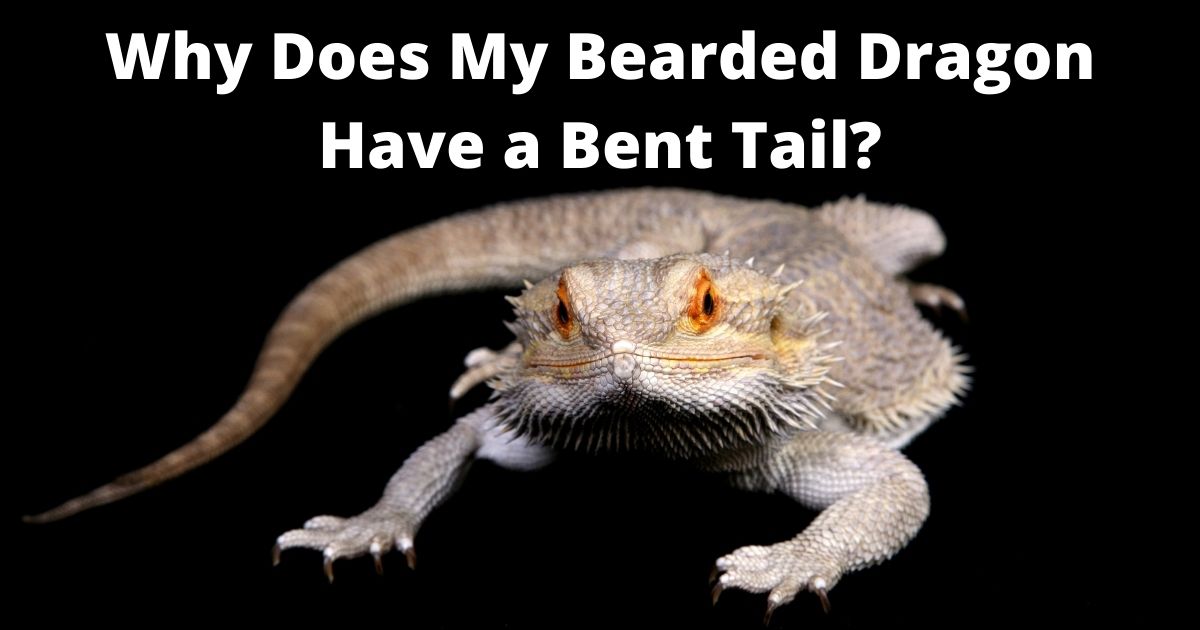As an affiliate, we earn from qualifying purchases on Amazon. We get commissions for purchases made through links in this post.
Does your bearded dragon have a bent tail? If so, there are several potential causes. It could be due to genetics, bone disease, or even trauma. This article will explore the most common reasons why bearded dragons have bent tails.
One potential reason for a bent tail is genetics. Some bearded dragons are born with a bent tails. This is usually due to a genetic mutation or deformity. If this is the case, unfortunately, not much can be done to fix it.
Another potential reason for a bent tail is bone disease. Bone disease can cause the bones to weaken and eventually break. This can lead to a bent tail. If your bearded dragon has the bone disease, it’s essential to get them to a vet as soon as possible.
Finally, trauma can also cause a bent tail. If your bearded dragon’s tail is bent due to trauma, it’s important to immediately take them to a vet. Trauma can cause severe damage and may even require surgery.
You May Also Like: Do bearded dragons burp? (Surprising Truth)
Why Does My Bearded Dragon Have a Bent Tail?
There are a few reasons why your bearded dragon may have a bent tail. One reason could be that they are not getting enough calcium in their diet, leading to metabolic bone disease.
Metabolic bone disease is when the bones become soft and weak due to a lack of calcium. Another reason could be that your bearded dragon has been injured, and its tail hasn’t healed improperly. If your bearded dragon is tail-biting, this can also cause its tail to become bent.

Prolee Reptile Terrarium Tank Large Size
- Pet and Human Safe Materials
- Front & Roof Door With Side Louvers
- Pre-Installed Bulb Sockets With Switches
Tail-biting is when a bearded dragon bites and chews on their tail. This can happen for a few reasons, such as boredom, stress, or aggression. Bearded dragons may also tail-bite if they are not getting enough of the proper nutrients in their diet. If your bearded dragon is tail-biting, you will need to take them to the vet so it can be treated.
If your bearded dragon has a bent tail, it is essential to take them to the vet so it can be appropriately diagnosed and treated.
Below is further info on this topic that is worth noting:
- Tail-biting can lead to infection and severe injury
- Tail-biting is a sign of stress or boredom in bearded dragons
- A lack of calcium can cause metabolic bone disease in bearded dragons
- Injured tails can heal improperly, causing the tail to be bent
- Bearded dragons need to see a vet if they have a bent tail to be properly diagnosed and treated.
You May Also Like: Why Does My Bearded Dragon Only Poop in Water? (4 Key Reasons Why)
Bearded Dragon Tail Rot
Bearded dragons are a type of lizard that is native to Australia. Their tails are an essential part of their anatomy, and they use them for balance and help them climb. When a bearded dragon’s tail becomes bent or twisted, it can signify that the lizard is suffering from tail rot.
Tail rot is a severe condition caused by some things, including infection, injury, or even malnutrition. If left untreated, tail rot can lead to serious health problems for your bearded dragon and can even be fatal.
If you think your bearded dragon may have tail rot, it’s essential to take them to the vet as soon as possible. While tail rot can be severe, it’s also treatable, and your vet will be able to help you get your lizard back on the road to recovery.
Related: Can I Put Calcium in My Bearded Dragons Water (Is It Safe)
What Causes Tail Rot in Bearded Dragons
Tail rot is a common condition in bearded dragons caused by an infection of the tail. The most common cause of tail rot is improper husbandry, such as not providing enough heat or not cleaning the cage properly. Tail rot can also be caused by injuries to the tail, such as biting or scratching.
Tail rot is a severe condition that can lead to death if not treated promptly. Bearded dragons with tail rot will often have a blackened or necrotic (dead) area on their tail. The affected area will often be swollen and may have an unpleasant odor. If you suspect your bearded dragon has tail rot, you should take them to a veterinarian immediately.
Treatment for tail rot often includes antibiotics and cleanings of the wound. In severe cases, part of the tail may need to be amputated. Most bearded dragons will recover from tail rot without any long-term effects with prompt treatment.
You May Also Like: Can You Smoke Around Bearded Dragons + 10 Negative Effects
How to Treat Tail Rot Bearded Dragon
Your bearded dragon’s tail is one of the most critical parts of its body. It is used for balance, but it’s also used for communication and storing fat reserves. A healthy tail should be long, thick, and slightly curved. If you notice that your bearded dragon’s tail is bent or has a sudden kink, this could be a sign of tail rot.
Tail rot is a severe condition that can lead to permanent damage or even death if left untreated. Tail rot is caused by an infection that starts at the base of the tail and slowly works its way up. The most common symptom of tail rot is a blackened or discolored area at the tip of the tail. If you notice any of these symptoms, it’s essential to take your bearded dragon to the vet.
You can do a few things at home to help treat tail rot. First, you’ll need to clean the affected area with warm water and soap. Then, apply an antibiotic ointment to the area. You’ll also need to give your bearded dragon baths in warm water for 20 minutes a day. Finally, you’ll need to provide your bearded dragon with a clean, warm, and humid environment to help them heal.
You May Also Like: Why is My Bearded Dragon Running Around Like Crazy
Conclusion
Tail rot is a severe condition that can be fatal if not treated promptly. Bearded dragons with tail rot will often have a blackened or necrotic (dead) area on their tail. The affected area will often be swollen and may have an unpleasant odor. If you think your bearded dragon has tail rot, you should immediately take them to the vet.
Treatment for tail rot often includes antibiotics and cleanings of the wound. In severe cases, part of the tail may need to be amputated. Most bearded dragons will recover from tail rot without any long-term effects with prompt treatment.

